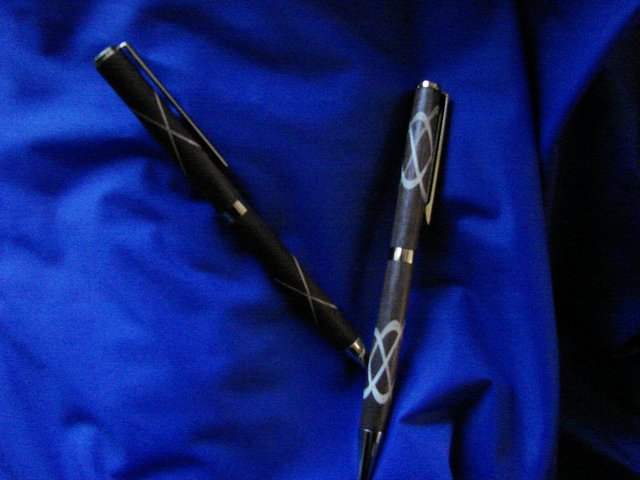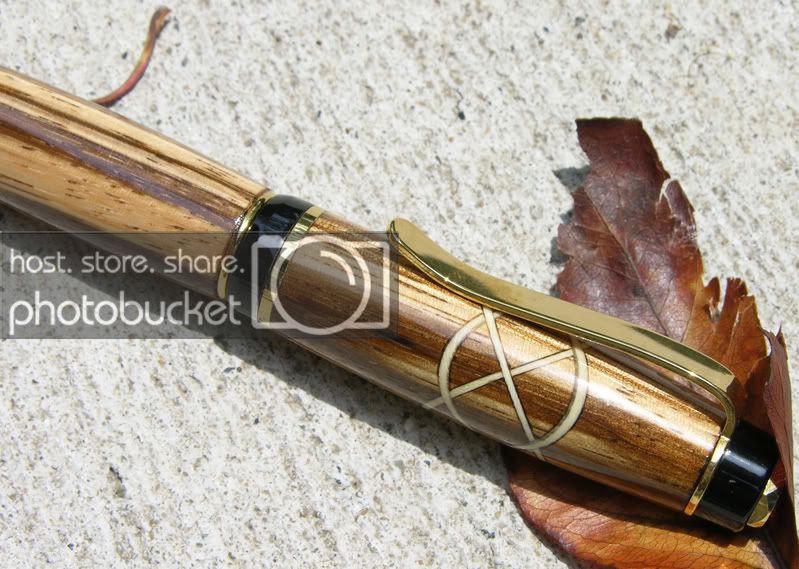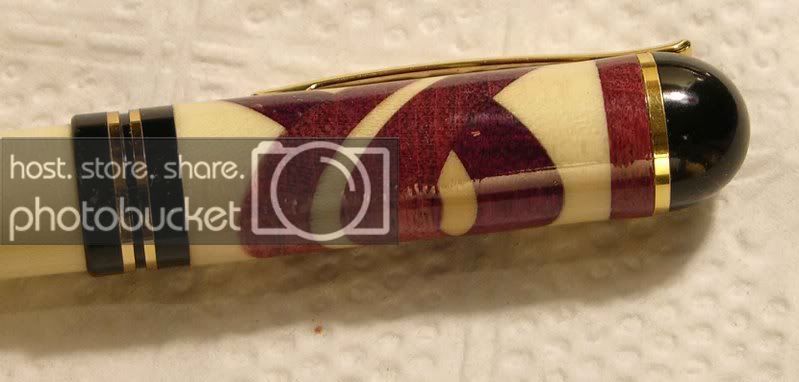KP
Member
Folks -
After having seen some pics of the celtic knot/double knot style pens, I've got the bug to make one or two of these. I was needing a special present for a friend, so I'm thinking of a desk set, both the pen and a letter opener with the knot.
I've read the tutorials, but still have a couple of questions.
First, my thinnest table saw blade kerf is 1/8 inch. It seems like this will make a kind of thick and chunky knot? Do folks use some other kind of blade? Would a 3/32 thin kerf-type blade make much difference?
Second, does the knot look better on a larger diameter pen? I'd been thinking about using a Berea Streamline American for this particular gift, as my friend doesn't have particularly big hands (woman, average size). An El Grande is somewhat larger but still not huge, and has a nice balance.
Third, what are folks thoughts about colors? A high contrast wood combination seems best, but I am torn between using a dark wood knot on a light wood pen, or the opposite. I am planning to use a gold plating.
I realize this is all opinion, but it's helpful to hear the thoughts of others, especially those with so much experience. This project is going to take a fair bit of effort, so I'd like to take my best shot at making the result worthwhile. Many thanks -
Ken
After having seen some pics of the celtic knot/double knot style pens, I've got the bug to make one or two of these. I was needing a special present for a friend, so I'm thinking of a desk set, both the pen and a letter opener with the knot.
I've read the tutorials, but still have a couple of questions.
First, my thinnest table saw blade kerf is 1/8 inch. It seems like this will make a kind of thick and chunky knot? Do folks use some other kind of blade? Would a 3/32 thin kerf-type blade make much difference?
Second, does the knot look better on a larger diameter pen? I'd been thinking about using a Berea Streamline American for this particular gift, as my friend doesn't have particularly big hands (woman, average size). An El Grande is somewhat larger but still not huge, and has a nice balance.
Third, what are folks thoughts about colors? A high contrast wood combination seems best, but I am torn between using a dark wood knot on a light wood pen, or the opposite. I am planning to use a gold plating.
I realize this is all opinion, but it's helpful to hear the thoughts of others, especially those with so much experience. This project is going to take a fair bit of effort, so I'd like to take my best shot at making the result worthwhile. Many thanks -
Ken




